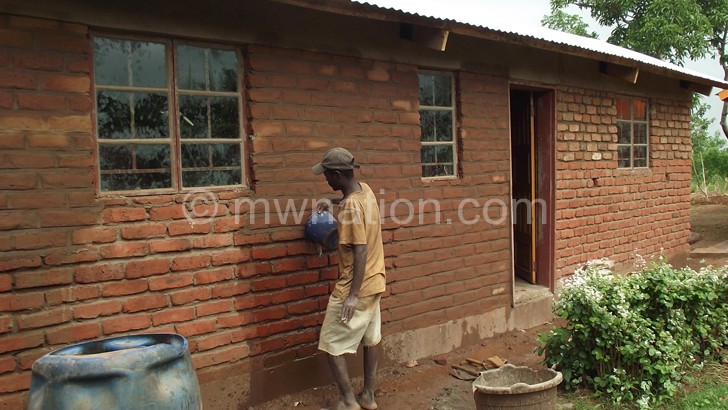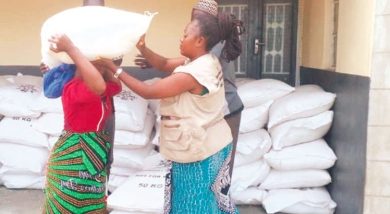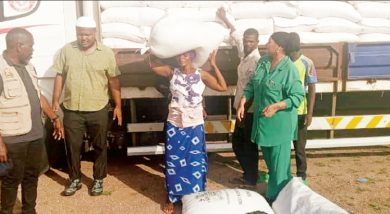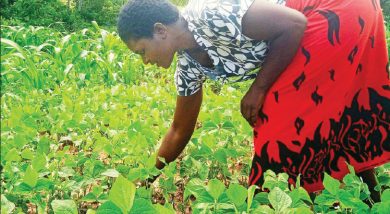The flop that is housing subsidy
President Peter Mutharika’s grandiose initiative to help the poor own decent houses has failed spectacularly three years after its launch, Weekend Nation can reveal.
The Decent and Affordable Housing Subsidy Programme (DAHSP)—for that is the official name of the building initiative—has two components.

The largest is the subsidy part, in which people get building materials on loan. Then there is the grants component, where government fully pays for the construction of houses for the poorest of the poor.
But as of today, just a third of those targeted to construct under the loan scheme have homes while only 1.2 percent of those government should have built houses for free have benefitted, figures from Ministry of Lands, Housing and Urban Development show.
The initiative targeted to build homes for at least 13 203 households annually over a five-year period from 2014, according to the programme’s concept note we have seen.
That figure breaks down to 68 households per constituency in a year, of which 63 would be on subsidy (loans) and five would be on grants (built freely for the poorest of the poor).

Over the past three years, that should have translated into 39 609 houses and a grand total of 66 000 after five years.
But since the launch in 2014 of the initiative—a major promise in the Democratic Progressive Party (DPP) 2014 winning manifesto—only 11 022 houses or less than a third of the target are complete.
In total, 18 877 families—slightly over half of the target—have accessed the loans, but 7 855 houses remain incomplete for various reasons, including, according to some beneficiaries, that they did not get all the materials as planned.
As for the grants component, government has only constructed 24 homes nationwide.
Of these homes, 10 are in Mwanza and 14 in Blantyre, representing 1.2 percent of the 1 930 target since 2015.
But even for the two districts’ grant-built homes, the money was diverted from the subsidy (loan) component of the programme, according to Ministry of Lands and Housing spokesperson Charles Vintulla.
“What actually happened for the grant component to remain behind was that actual funding for the whole DAHSP programme was not disbursed adequately and in time. This led to the ministry’s failure in implementing the grant component fully,” he said.
In total, government has spent K14.1 billion on DAHSP, representing 48 percent of K29.4 billion that it should have received to date.
Vintulla said the beneficiaries were identified by the Housing Development Group through existing community structures.
“However, the ministry noted that there were concerns regarding selection of beneficiaries. The ministry has discovered that in the initial phase of the programme, some poor people—the intended beneficiaries—were reluctant or not interested to be first beneficiaries as they were uncertain about DAHSP and this is common in the adoption process of most development programmes that are new in nature.
“It was this uncertainty that led to some members of the community offering themselves as ‘lead beneficiaries’ to test the programme,” Vintula said in an email response.
Dire straits
Information Weekend Nation gathered through visits to several areas and by phone interviews with some beneficiaries and project implementers shows a programme in dire straits.
Some of those under the loan scheme said in interviews that their own government is short-changing them on quality and quantity of materials received as well as their attendant prices.
Beneficiaries and officials also share stories of substandard, incomplete—and even wrong—packages of materials.
There is also general chaos in the programme’s administration due to absence of clear operational guidelines, including how people should repay the loans.
Selefodi Mkize of Khasu Village in T/A Mlolo in Nsanje District described the programme as a “rip-off.”
In an interview, he claimed not to have received all the materials yet he is expected to pay the money in full.
Mkize said his calculation for the materials that government indicated to provide was K250 000.
But he received fewer materials, of substandard quality and not of the brand they were charged for.
Mkize said he received 32 gauge iron sheets instead of 28 gauge; 20 bags of Khoma cement instead of the more expensive Duracrete Cement, which last year was selling at K6 500 per 50kg bag.
“But on paper I am supposed to pay for 28 gauge iron sheets and Duracrete. I had to sell my maize and goats to pay the builder and buy additional materials, including window and door frames. I have also not received K50 000 subsidy for labour,” he said.
“Why should I pay K6 500 for cement that is cheaper on the regular market? I want to meet government officials to discuss this,” said Mkize, adding that he has spent K90 000 more than he should have had the pledged materials come as promised.
In Mombezi Ward in Chiradzulu District, Aubrey Chipojola, one of the beneficiaries from Chikagwire Village in group village head Kumitete, said the project would not benefit poor people because it is too costly.
In Kumitete area, three people were earmarked to benefit from the loan project—Chipojola and Catherine Jimu—while Sub T/A Kumitete was earmarked for a grant house.
“I am being charged cement at K6 500, which is the price for Duracrete Cement, but the actual cement that was delivered is Khoma. I am charged for 28 gauge iron sheets, but received 32-gauge iron sheets.
“The paint that was delivered was expired. When I told them this, they only said they will sort it out. It is now almost three years since,” he said.
Chipojola registered to collect materials worth K449 961, but he said he will only pay half the amount for the materials that he collected.
“This project is not for the poor people,” he said.
Jimu of Chimpesa Village in Sub T/A Kumitete said her family had to sell their sugarcane field to find extra money to finish the house because they received much less materials than was planned in the loan package.
She was supposed to collect a building materials package worth K436 538 comprising iron sheets, cement, timber, door frames, locks, sorignum, nails and putty.
But what did she get?
“I did not get any of the three window frames and the paint I got was expired,” said Jimu.
A beneficiary from the second phase in Chiradzulu District, Lennie Nkombe of Malundi Three Village in Sub-T/A Onga, said she did not receive all the materials indicated on her list.
“I bought the door and window frames. They kept on promising that they will bring the remaining materials and I have been waiting. I could not wait any longer so I decided to pay for the window frames myself,” she said.
Apart from the windows, Nkombe was also waiting for authorities to provide roof ridges and also K50 000 subsidy for labour.
In Ntcheu District, Elina Bamusi of Chalunda Village in T/A Phambala, who has a loan of K380 000, said she has not received the K50 000 subsidy for paying the builder. She too has also not received the other materials.
She has had to cough K130 000 from her own resources to fill the gap that government should have filled.
Bamusi claimed, three people in her area had to sell cement and iron sheets they received on loan because they do not have enough money to start construct the houses.
Programme design
The DAHSP was meant to benefit poor people in the villages by giving them material loans to acquire a maximum of 30 ten feet 29/30 gauge corrugated iron sheets and a maximum of 30 bags 50 kg bags of cement and other related building materials. The beneficiary is required to contribute 50 percent of the total cost.
For the grant programme, villagers were to identify and provide a house, toilet, kitchen and bath room for the elderly and feeble, female or child-headed households and persons with severe disabilities, who currently have no decent home, and those who have no capacity to contribute any cash or labour to construct their houses.
At national level, the Ministry of Lands, Housing and Urban Development coordinates the programme, but implementation is supposed to be through local councils and Housing Development Groups (HDGs). At area or group village headman level the village development committees (VDCs) and area development committees (ADCs) should oversee the operations of HDGs. “It was expected that members of Parliament (MPs), ward councillors and traditional authorities will, through their respective capacities, in these committees, support the implementation of the programme,” reads the ministry’s concept paper.
But the reality is different.
—MPs bitter—
But MPs randomly picked, expressed reservations on how the programme was being managed, saying the initiative was more of a political tool than a development one.
Karonga South MP Malani Mtonga said it was hard to tell who was benefiting from his constituency.
Dedza MP Juliana Lunguzi said she has received a lot of complaints about substandard and poor quality materials. “Nobody wants to be transparent. The whole programme needs to be revisited and the MPs have no stakes in the programme,” she said.
Mulanje MP Bon Kalindo said people in his constituency are not interested in the material loans because they were expensive, saying no single house for the poor has been built.
The ministry’s spokesperson said the programme was facing funding challenges and timely delivery of appropriated funds.
Vintulla said DAHSP totally relies on government’s direct funding from Teasury, which his ministry cannot control.
He further observed that the challenges are also due to lack of capacity in councils.
Vintulla conceded that some beneficiaries get materials that are of poor quality or less quantities than planned. n





